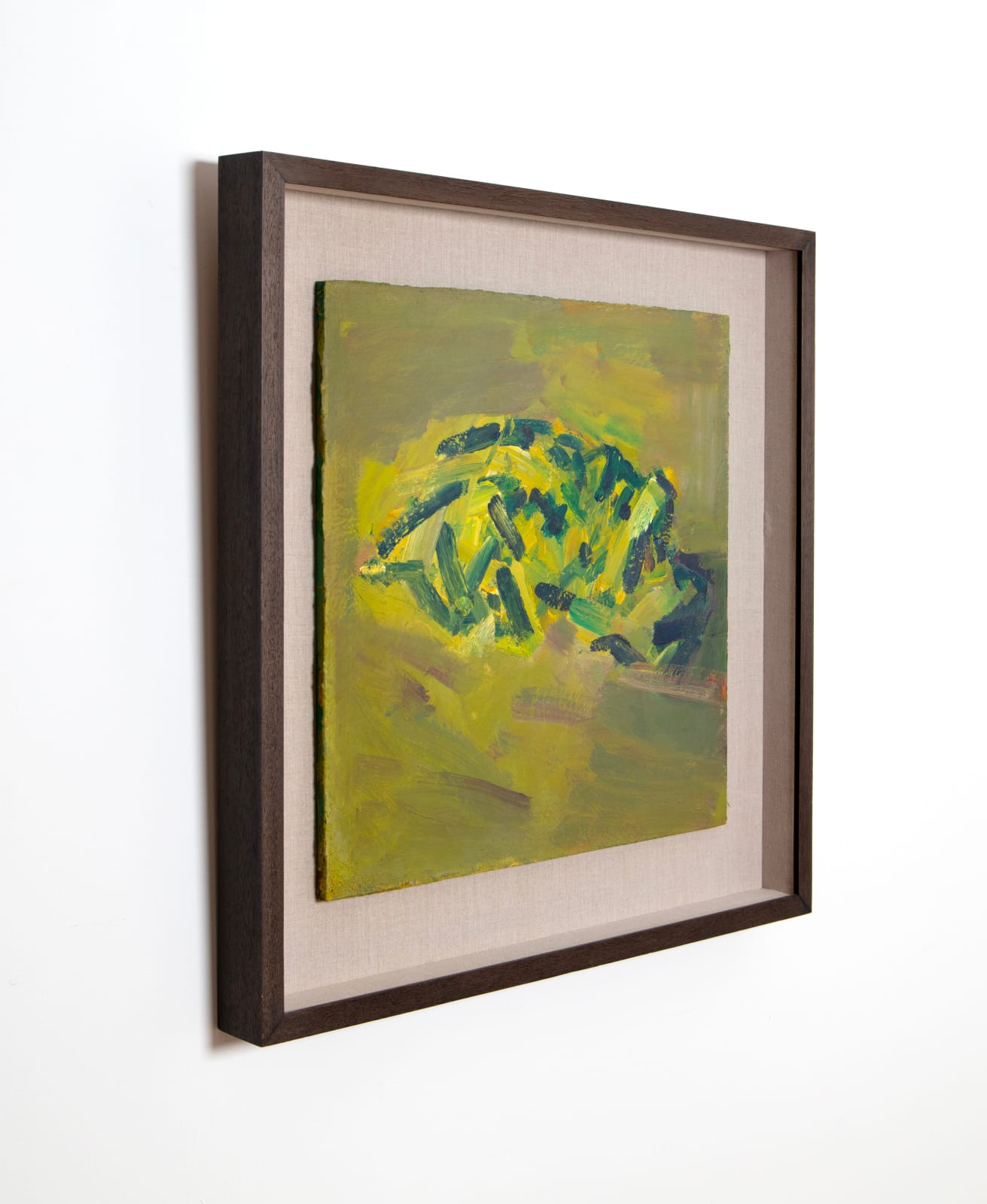



Frank Auerbach German-born British, 1931-2024
Reclining Head of Julia, 2017-18
Acrylic on board
51.1 x 51.1 cm. (20 1/8 x 20 1/8 in.)
Copyright The Artist
Further images
In Reclining Head of Julia (2017-18) Frank Auerbach coaxes Julia’s reclining form into view with thick, expressive sweeps of green impasto. There is nothing tentative in the brushwork; instead, a...
In Reclining Head of Julia (2017-18) Frank Auerbach coaxes Julia’s reclining form into view with thick, expressive sweeps of green impasto. There is nothing tentative in the brushwork; instead, a muscular, directional force charges the surface. Her jawline, nose, and cheekbones seem to rise and fall through a wash of lime and yellow, as though emerging from water. The contours are at once deliberate and elusive – suggestive rather than declarative. The result is not a likeness in the conventional sense, but something stranger, more intimate: a record of perception as it shifts and settles.
Auerbach first met Julia during his years at the Royal College of Art. They married in 1958, the same year their son Jake was born. Not long after, they separated. Julia appears sporadically in the early charcoal drawings, but it wasn’t until their reconciliation in 1976 that she assumed a central role in his artistic life – becoming one of his most enduring sitters over the next three decades, until his death in 2024.
Sittings took place in Julia’s flat in Finsbury Park, midweek and on weekends, and over time the act became routine. “You just do it,” she once said, “like you wash up” (Feaver, 2006, p. 21). It was in this modest space that Auerbach first began to paint her lying down – on a fold-up bed – and where he made his first sustained forays into acrylic on board, the medium used in the present work.
There is a quality of deep familiarity in the portrait, something in the serenity of her pose that hints at the shared history between artist and sitter. The paint itself becomes the language of that relationship – its labour, its rhythm, its private grace. As Auerbach once observed, “Paint is at its most eloquent when it is a by-product of some corporeal, spatial, developing imaginative concept – a creative identification with the subject” (Lampert, 2001, p. 27). In this portrait, that creative identification is palpable. The work hums with it.
Auerbach first met Julia during his years at the Royal College of Art. They married in 1958, the same year their son Jake was born. Not long after, they separated. Julia appears sporadically in the early charcoal drawings, but it wasn’t until their reconciliation in 1976 that she assumed a central role in his artistic life – becoming one of his most enduring sitters over the next three decades, until his death in 2024.
Sittings took place in Julia’s flat in Finsbury Park, midweek and on weekends, and over time the act became routine. “You just do it,” she once said, “like you wash up” (Feaver, 2006, p. 21). It was in this modest space that Auerbach first began to paint her lying down – on a fold-up bed – and where he made his first sustained forays into acrylic on board, the medium used in the present work.
There is a quality of deep familiarity in the portrait, something in the serenity of her pose that hints at the shared history between artist and sitter. The paint itself becomes the language of that relationship – its labour, its rhythm, its private grace. As Auerbach once observed, “Paint is at its most eloquent when it is a by-product of some corporeal, spatial, developing imaginative concept – a creative identification with the subject” (Lampert, 2001, p. 27). In this portrait, that creative identification is palpable. The work hums with it.
2
of
2



